#sauropodomorpha
Photo

Spinophorosaurus nigerensis from the Middle Jurassic (Bathonium, 167 Ma), Niger
#paleoart#palaeoart#art#paleontology#palaeontology#paleoblr#palaeoblr#dinosaur#dinosaurs#digital art#spinophorosaurusnigerensis#spinophorosaurus#Gravisauria#Sauropoda#Sauropodomorpha#Saurischia
684 notes
·
View notes
Photo

Shunosaurus
The Finnish Museum of Natural History, Helsinki, Finland
301 notes
·
View notes
Text
Qianlong shouhu Han et al., 2023 (new genus and species)

(Select bones and schematic skeletals of adult [a] and embryonic [b] individuals of Qianlong shouhu, with preserved bones in gray, from Han et al., 2023)
Meaning of name: Qianlong = Qian [alternative name for Guizhou] dragon [in Chinese]; shouhu = guarding [in Chinese]
Age: Early Jurassic (Sinemurian?)
Where found: Ziliujing Formation, Guizhou, China
How much is known: Three partial skeletons of adult individuals and five clutches of 3–16 eggs containing embryos.
Notes: Qianlong was an early sauropodomorph. It is notable not only for the exceptional preservation of its fossils, but also the fact that these specimens appear to be associated with nests, thus offering valuable information on their growth and reproductive behavior. As has also been found for some early sauropodomorphs, such as Massospondylus from the Early Jurassic of Southern Africa and Mussaurus from the Early Jurassic of Argentina, Qianlong appears to have laid its eggs in breeding colonies with adult individuals potentially watching over their nests. Qianlong was additionally similar to these other early sauropodomorph in being bipedal as an adult, but likely quadrupedal as a young juvenile.
Rigid, hard-shelled eggs have been found in multiple groups of dinosaurs, including tetanuran theropods (such as birds), hadrosaurids (duck-billed dinosaurs), and titanosaurian sauropods, as well as their closest living relatives, the crocodylians. As a result, it was long assumed that all dinosaurs probably laid hard-shelled eggs. However, recent evidence has suggested that the eggs of early dinosaurs may have instead had flexible, leathery shells, more similar to those of most lizards and some turtles, with rigid eggshells evolving several times in later dinosaur groups. The eggshells of Qianlong appear to have been leathery in structure, lending support to this hypothesis.
Reference: Han, F., Y. Yu, S. Zhang, R. Zeng, X. Wang, H. Cai, T. Wu, Y. Wen, S. Cai, C. Li, R. Wu, Q. Zhao, and X. Xu. 2023. Exceptional Early Jurassic fossils with leathery eggs shed light on dinosaur reproductive biology. National Science Review advance online publication. doi: 10.1093/nsr/nwad258
143 notes
·
View notes
Text
It Came From The Trash Heap (We Don't Talk About Kholumolumo)
A wastebasket taxon is what happens when species can't be easily classified and instead get hurled into a "catch-all" category.
…But that's not the only kind of taxonomic tangle that can befall a new discovery.
When a scientific name is assigned to a new species, but it isn't given a corresponding formal description and type specimen, it becomes a nomen nudum – a "naked name". Without a proper description and assigned holotype the name isn't valid, and the new species isn't technically accepted by the wider scientific community.
This has even happened to some surprisingly famous names. In the 1920s Velociraptor mongoliensis was briefly given the nomen nudum "Ovoraptor djadochtari" before getting its much more familiar name when it was officially described. Meanwhile the giant pterosaur Quetzalcoatlus northropi was stuck as a nomen nudum for decades, only finally getting a proper published description in 2021.
And there's another particular long-standing nomen nudum that became mildly infamous – "Thotobolosaurus", the "trash heap lizard".
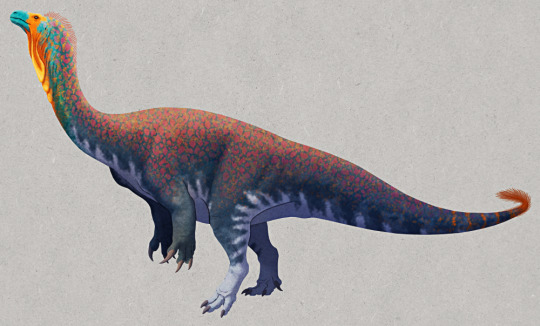
Discovered next to a literal trash pile in the village of Maphutseng in Lesotho, a few scattered and broken bones of this "prosauropod" sauropodomorph dinosaur were first found in 1930. But it wasn't until the mid-1950s that a more extensive bonebed began to be unearthed at the site, and over the next decade over 1000 fossil fragments were collected.
In the mid-1960s the remains were initially classified as belonging to Euskelosaurus browni (which is now considered to be a wastebasket taxon), but just a few years later in 1970 the "Maphutseng Beast" was re-evaluated as a species new to science. It was referred to as "Thotobolosaurus mabeatae" – based on the local name of the discovery site, "Thotobolo ea ‘Ma-Beata" (trash heap of Beata’s mother) – but this name was never actually formally published.
Despite "Thotobolosaurus" being an undescribed nomen nudum it nonetheless went on to be repeatedly referenced in scientific literature over the next few decades, and appeared in several popular dinosaur books (even as recently as 2020!).
In the mid-1990s it was alternatively named "Kholumolumosaurus ellenbergerorum" in a Ph.D. dissertation, with this name derived from the kholumolumo, a reptilian creature in Sotho mythology, and the Ellenberger brothers who worked on the site. But this also didn't count as a formal publication and instead became a second nomen nudum for the species.
Eventually, 90 years after the first bones were found and 50 years after the debut of the name "Thotobolosaurus", this long-neglected sauropodomorph was finally given a proper published full anatomical description in 2020.
And it also got a third name, this time officially valid, based on the second one from the 1990s: Kholumolumo ellenbergerorum.
For something associated with trash for so long, Kholumolumo is actually now one of the most completely-known prosauropods. At least five different individuals were present in the collected fossil material, possibly as many as ten, and between them most of the full skeleton is represented – with the exception of the skulls, which are only known from a couple of small fragments.
We now know Kholumolumo was rather heavily-built, with chunky limb bones and unusually short shinbones. It would have been one of the biggest animals around in the Late Triassic (~210 million years ago), measuring at least 9m long (~30') and weighing around 1.7 tonnes (1.9 US tons), but despite its size it seems to have still been bipedal.
Due to the highly disarticulated nature of the bones the fossil site may have been a "bone accumulation area", a place where dismembered bits and pieces of different carcasses were regularly carried to be eaten by a predator or scavenger – essentially a trash heap, fittingly enough. A couple of "rauisuchian" teeth have actually been found among the remains, which might indicate what was chomping on these particular Kholumolumo.
———
Nix Illustration | Tumblr | Twitter | Patreon
#it came from the wastebasket#nomen nudum#taxonomy#kholumolumo#thotobolosaurus#prosauropod#massopoda#sauropodomorpha#dinosaur#paleontology#art#science illustration#paleoart#palaeoblr
290 notes
·
View notes
Text

Plateosaurus.
#art#digital art#illustration#paleo#palaeoblr#paleoart#prehistoric#dino#dinosaur#dinosaurs#reptile#prosauropod#sauropodomorpha#plateosaurus#plateosaurid#extinct#extinct animals#archosaur#dinovember#dinovember2022#it looks kinda bad because i rushed it a bit sorry
168 notes
·
View notes
Text


My first two entries to this year's Dinovember! Day 1 was Eoraptor and Day 2 is Herrerasaurus. Both colorations are inspired by a book I used to own that they appear in, "Life Size Dinosaurs" by David Bergen.
#Dinovember#Eoraptor#Herrerasaurus#Dinovember2022#Triassic#Dinosaurs#Dinosaur#theropod#sauropodomorpha#dinosaur art#dino art#digital art#traditional art#deceitful art
132 notes
·
View notes
Text

Plateosaurus head from memory.
8 notes
·
View notes
Text

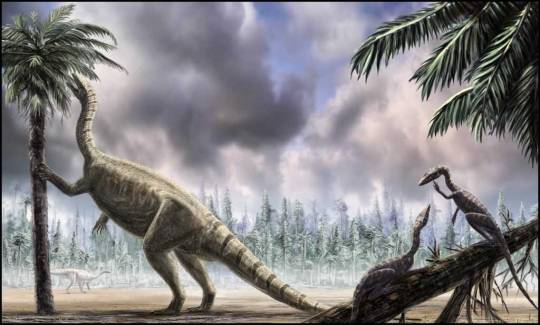
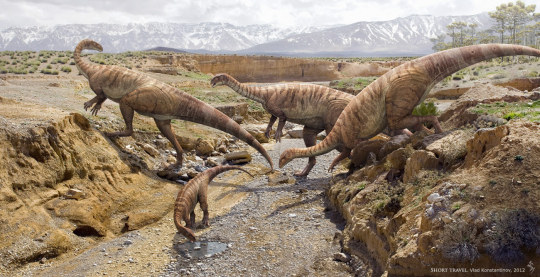
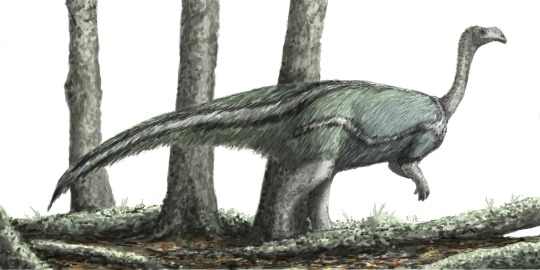
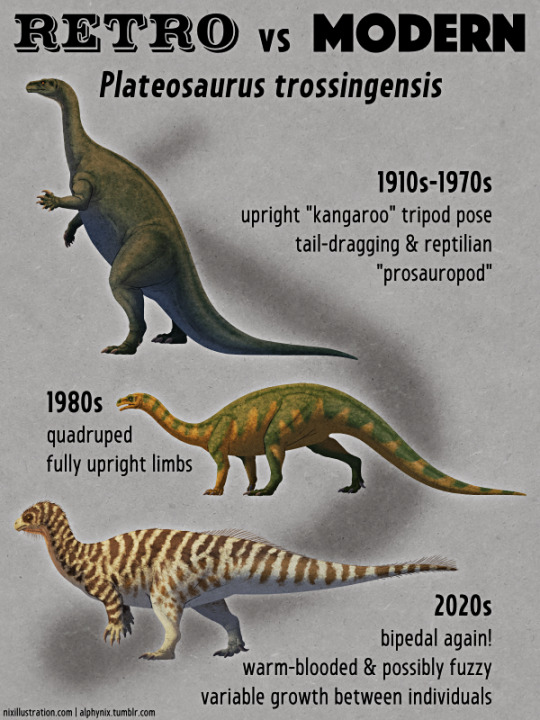
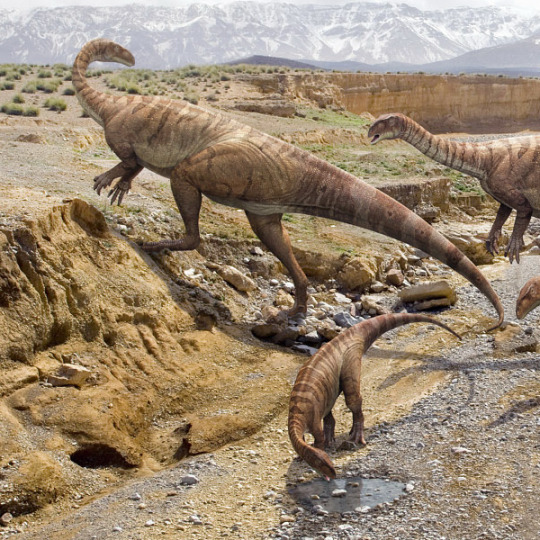




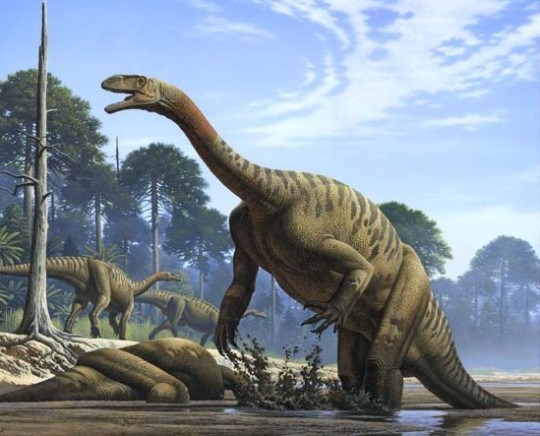
Plateosaurus is a genus of basal early sauropodomorph dinosaur aka a prosauropod, which lived throughout what is now Europe and possibly Greenland from the Norian to the Rhaetian of the late triassic some 214 to 204 million years ago. The first remains now known to belong to Plateosaurus consisted of parts of the legs and some vertebrae were unearthed in 1834 by physician Johann Friedrich Engelhardt at Heroldsberg near Nuremberg, Germany. He then showed them to palaeontologist Hermann von Meyer, who in 1837 designated them as Plateosaurus meaning broad lizard. This means that Plateosaurus is the fifth named dinosaur genus that is still considered valid. Since then the remains of well over 100 individuals have been recovered throughout Switzerland, France, Norway, and especially the German region of Swabia causing German palaeontologist Friedrich August von Quenstedt to nickname the animal Schwäbischer Lindwurm meaning the Swabian Dragon. Material referred to Plateosaurus has also been found in the Fleming Fjord Formation of East Greenland, however much of these remains have now been assigned to its own distinct genus of prosauropod called Issi. Although there remains some indeterminate material from the local still assigned to plateosaurs. Today 3 species are considered valid: P. trossingensis, P. longiceps, and P. gracilis. Unusual amongst dinosaurs, plateosaurs had a high amount in developmental plasticity with adult specimens reaching anywhere from 66 to 33ft (4.8 to 10m) in length and 1,300 to 8,800lbs (600 to 4,000kgs) in weight. Despite the great quantity and quality of fossils, Plateosaurs was for a long time a source of confusion and misunderstanding. Leading to there being considerable debate in regards animal's biology, taxonomic position, physical posture and behavior over the years. The modern understanding of these animals is that they were large obligate bipeds which sported small heads, long and flexible necks, sharp but plump plant-crushing teeth, powerful hind limbs, short but muscular arms and grasping hands with large claws on three fingers which were used for both defense and feeding. Plateosaurus likely lived in loose herds and feed upon a wide variety of vegetation, acting as the primary large herbivore of its environments, occasionally supplementing its diet with carrion, insects, or small vertebrates.
Art used above can be found at the links below
https://nixillustration.com/science-illustration/2022/retro-vs-modern-10-plateosaurus/
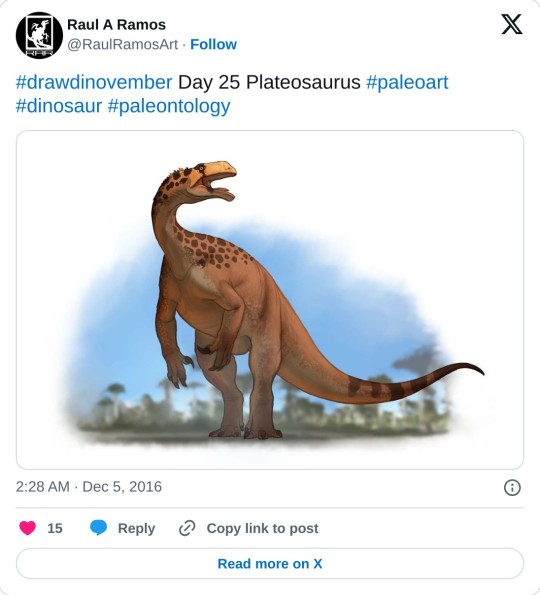
#pleistocene pride#pliestocene pride#mesozoic#dinosaur#dinosaurs#sauropod#prosauropod#sauropodomorpha#plateosaurs#dragon#triassic
5 notes
·
View notes
Text
Dinofact #58
Mussaurus, a sauopodomorph, meaning "mouse lizard", was so named because originally, the only known specimens were very small, leading scientists to believe that the dinosaur was an incredibly small sauropodomorph. However, these specimens have since been confirmed to be infant and juvenile, and adult specimens have been discovered. Current estimates show that the dinosaur may have been 6 meters (20 feet) long and weighed more than 1,000 kilograms (2,200 pounds), so the name may be a bit of a misnomer.
#dinosaur#dinosaurs#paleontology#mussaurus#sauropod#sauropods#sauropodomorpha#sauropodomorph#sauropodomorphs#fun facts#trivia#dinosaur trivia#dinosaur fun facts#21st#october#2022#october 21st#october 2022#october 21st 2022
29 notes
·
View notes
Text

Tuebingosaurus
Реконструкція можливих обставин гибелі тварини. Tuebingosaurus тоне в грязьовій пастці атакований Teratosaurus. На задньому плані стадо Plateosaurus trossingensis тікає з місця події. Флора болота реконструйована на основі скам’янілостей з германського басейну: пагони хвощів і папоротей вкривають болото, а ліс складається з саговників, лікофітів і хвойних рослин.
Tuebingosaurus – рід масоподанових зауроподоморфних динозаврів з пізнього тріасу…
Повний текст на сайті "Вимерлий світ":
https://extinctworld.in.ua/tuebingosaurus/
#tuebingosaurus#paleoart#sauropodomorpha#art#dinosaur#late triassic#germany#dinosaurs#paleontology#animals#prehistoric#fossils#illustration#image#animal art#prehistory#ukraine#ukrainian#палеоарт#палеонтологія#динозавр#німеччина#extinct#daily#ua#україна#мова#арт#українська мова#тварини
19 notes
·
View notes
Photo

Day 22: Argentinosaurus A largest titanosaur of the late Cretaceous Argentina. #dinovember #dinovember2022 #paleoart #sketchbook #argentinosaurus #argentinosaurushuinculensis #titanosauria #sauropoda #sauropodomorpha #saurischia #dinosauria #dinosaur #myart https://www.instagram.com/p/ClR0Joxv4w-/?igshid=NGJjMDIxMWI=
#dinovember#dinovember2022#paleoart#sketchbook#argentinosaurus#argentinosaurushuinculensis#titanosauria#sauropoda#sauropodomorpha#saurischia#dinosauria#dinosaur#myart
4 notes
·
View notes
Photo
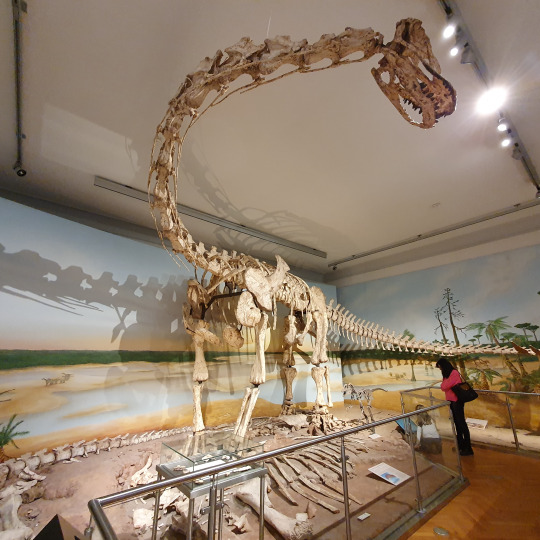
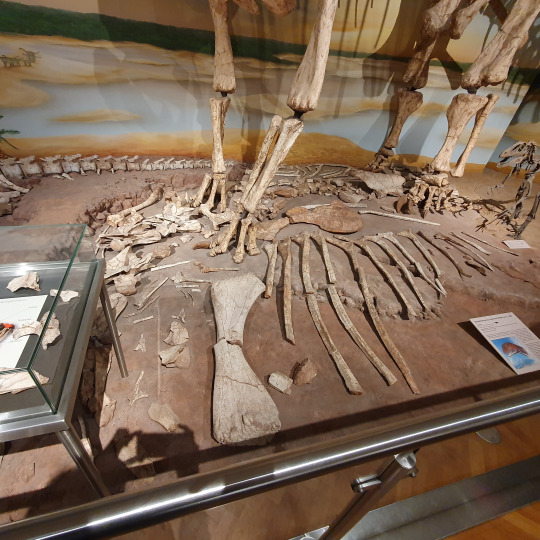
The mounted Spinophorosaurus nigerensis skeleton. The original bones are on the ground, the mount is a reproduction made slightly smaller to fit into the room. Shot at the Natural History Museum in Braunschweig (Germany)
#paleontology#palaeontology#fossil#fossils#spinophorosaurusnigerensis#spinophorosaurus#Gravisauria#Sauropoda#Sauropodomorpha#sauropod#Saurischia
132 notes
·
View notes
Photo
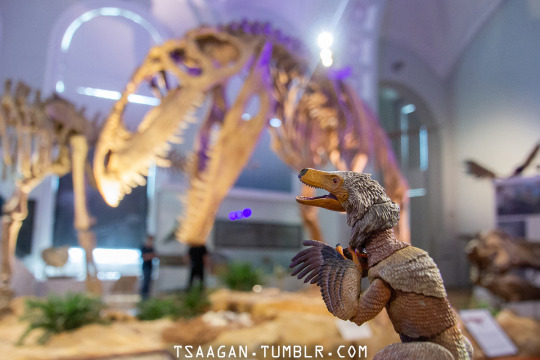

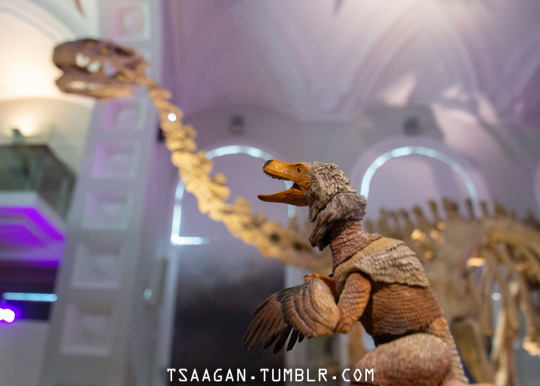
Just visiting my relatives~
The Finnish Museum of Natural History, Helsinki, Finland
50 notes
·
View notes
Text
Mbiresaurus raathi Griffin et al., 2022 (new genus and species)

(Select bones and schematic skeletal of Mbiresaurus raathi [scale bars = 1 cm for most individual bones; 1 mm for “s”, an individual tooth; and 20 cm for the skeletal], with preserved bones in white, from Griffin et al., 2022)
Meaning of name: Mbiresaurus = Mbire lizard [in Greek]; raathi = for Michael Raath [South African paleontologist]
Age: Late Triassic (Carnian)
Where found: Pebbly Arkose Formation, Mashonaland Central, Zimbabwe
How much is known: Skeletons of at least two individuals, one of which is nearly complete. Some isolated femora (thigh bones) from the same region may also belong to this taxon.
Notes: Mbiresaurus was an early sauropodomorph. Although sauropodomorphs famously include gigantic, long-necked quadrupeds, the earliest members of this group, including Mbiresaurus, were relatively small (less than 2 m long), bipedal dinosaurs.
Other than the controversial Nyasasaurus, which is only known from fragmentary remains, Mbiresaurus is the oldest known dinosaur from Africa, and possibly one of the oldest known dinosaurs in the world. Dinosaur fossils of similar age have otherwise only been found in South America and India. The fossil sites where such early dinosaurs were discovered were all situated at high latitudes in the Southern Hemisphere during the Late Triassic, which may suggest that the oldest dinosaurs were restricted to this geographic region.
Reference: Griffin, C.T., B.M. Wynd, D. Munyikwa, T.J. Broderick, M. Zondo, S. Tolan, M.C. Langer, S.J. Nesbitt, and H.R. Taruvinga. 2022. Africa's oldest dinosaurs reveal early suppression of dinosaur distribution. Nature advance online publication. doi: 10.1038/s41586-022-05133-x
102 notes
·
View notes
Text
It Came From The Wastebasket #13: Certifying Cetiosaurus
Discovered in England in the early 1840s, Cetiosaurus was one of the first sauropod dinosaurs known to science – although its scrappy remains were initially mistaken for a massive crocodile-like marine reptile, hence its name meaning "whale lizard".
It wasn't even identified as being some sort of dinosaur until a couple of decades later, and then in the 1870s discoveries of much more complete sauropods like Brontosaurus and Diplodocus in North America led to it finally being recognized as a similar long-necked form.
Like some other early dinosaur discoveries it quickly became a wastebasket taxon, with vaguely-similar fragmentary fossils found in England, France, Switzerland, and Morocco all being lumped under its name. By the end of the 20th century nearly 20 different Cetiosaurus species had been created, most of them highly dubious and based on poor fossil material without any distinctive anatomical features.

Cetiosaurus oxoniensis
It wasn't until the early 2000s that the mess was finally cleaned up. A major revision and redescription of Cetiosaurus determined that just one species was actually valid: Cetiosaurus oxoniensis from the mid-Jurassic of England, known from fairly complete remains and dating to about 170 million years ago.
But this did create a new problem – it meant that the original type species Cetiosaurus medius wasn't actually based on anything distinctive. So, much like what happened with Iguanodon, the type species was officially changed to Cetiosaurus oxoniensis in 2014, ensuring that this historically significant genus was defined by decent fossil material rather than by dubious fragments.
———
Nix Illustration | Tumblr | Twitter | Patreon
#it came from the wastebasket#wastebasket taxon#taxonomy#cetiosaurus#sauropod#sauropodomorpha#dinosaur#paleontology#art#science illustration#paleoart#palaeoblr
220 notes
·
View notes
